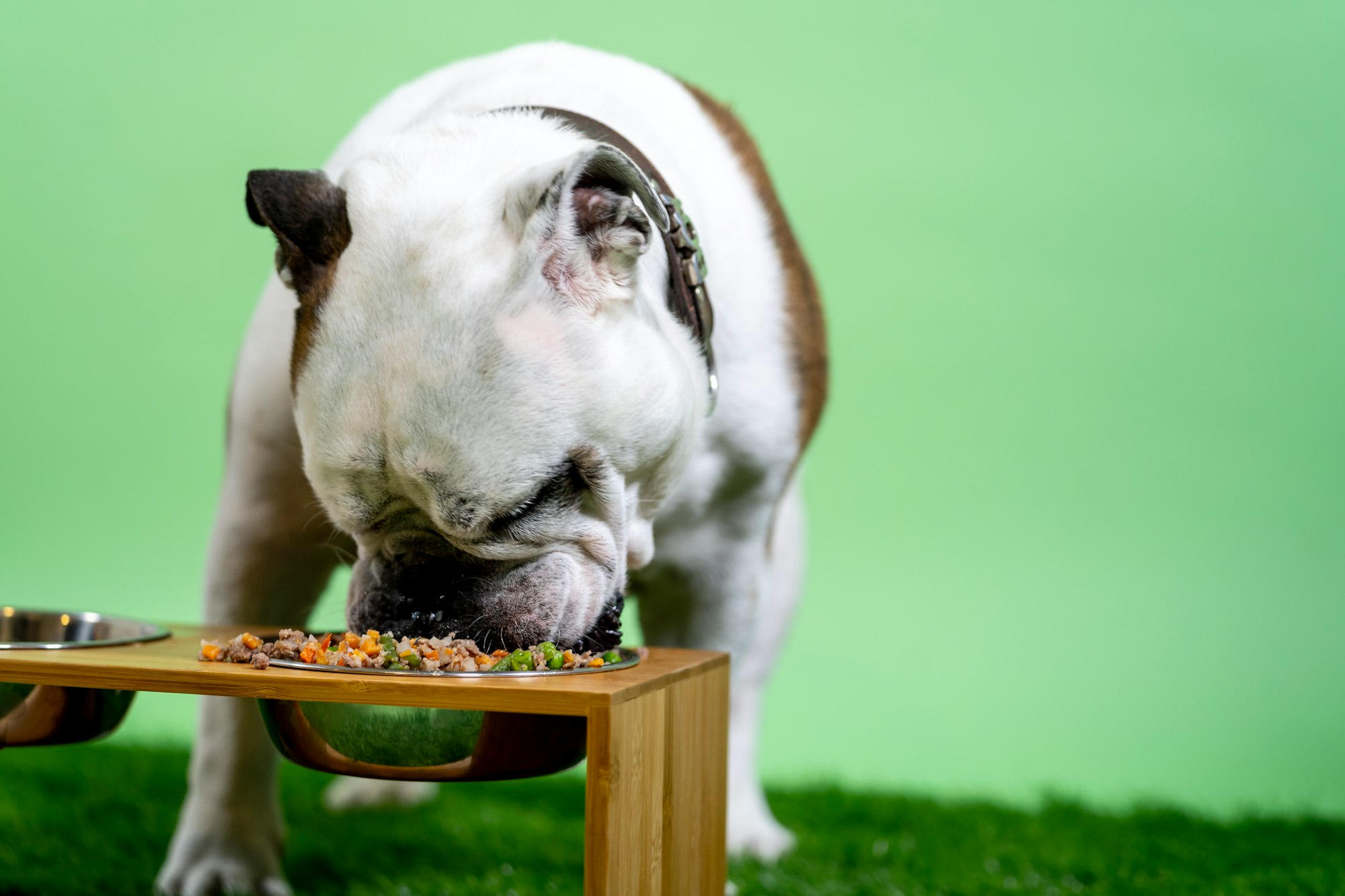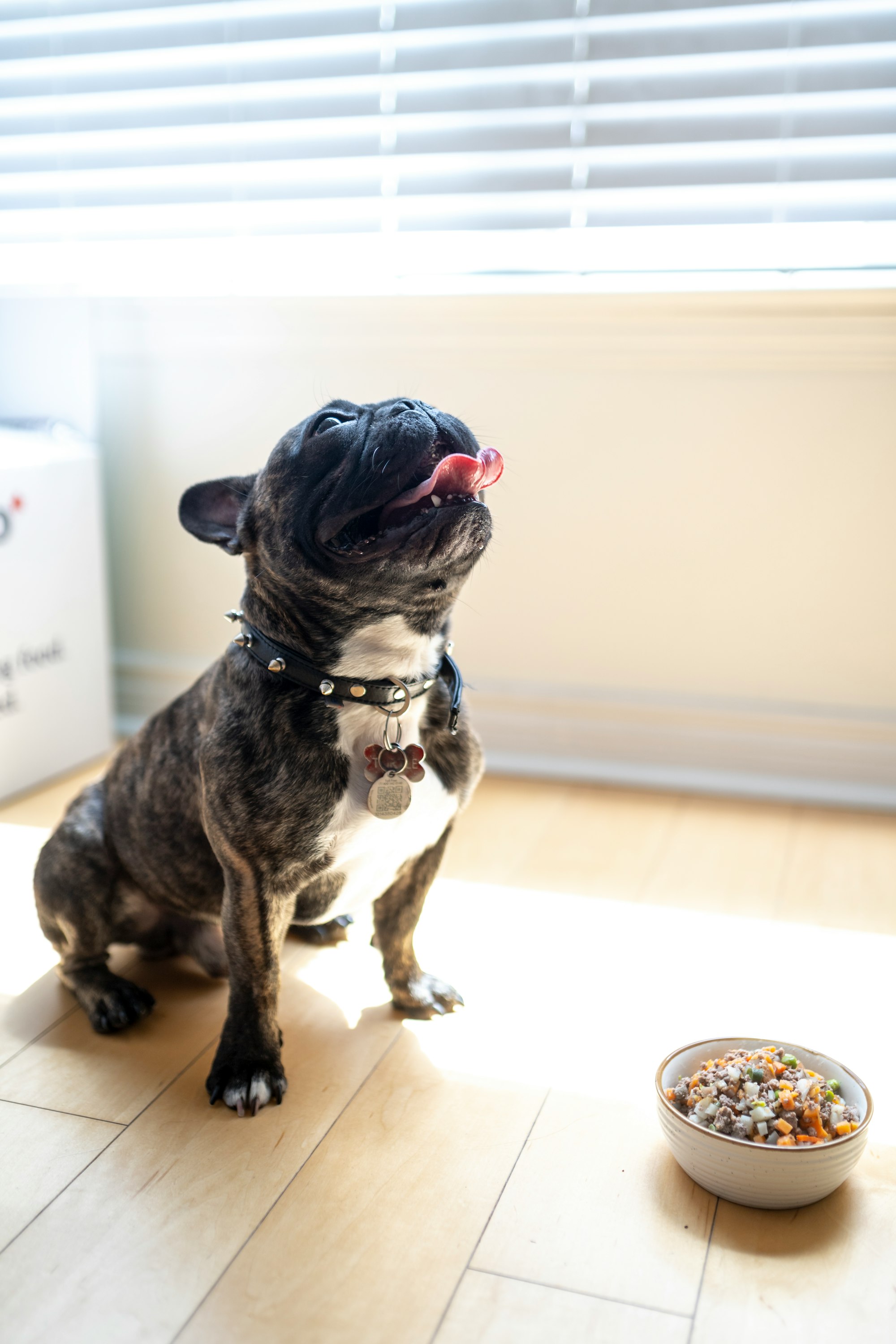If you're a dog owner, you've probably encountered a situation where your furry friend turned their nose up at their dry kibble. Whether it's a picky eater or a senior dog with dental issues, there are times when you need to know how to soften dog food effectively. In this quick guide, we'll walk you through the best methods to make your dog's mealtime a more enjoyable experience.

Why Soften Dog Food?
Before we dive into the "how," let's briefly touch on the "why." There are several reasons why you might want to soften your dog's food:
- Dental Problems: Dogs, especially as they age, can develop dental issues that make chewing hard kibble painful. Softening their food can ease the strain on their teeth.
- Picky Eaters: Some dogs are simply picky eaters. Softening their food can make it more appealing and encourage them to eat.
- Medical Reasons: If your veterinarian has recommended a soft diet due to medical issues, it's essential to know how to do it properly.
- Young Puppies: Puppies, particularly those transitioning from milk to solid food, may find softened food easier to eat and digest.
Now that we understand why softening dog food is necessary, let's explore some effective methods to do it.
Method 1: Using Warm Water
One of the simplest ways to soften your dog's food is by using warm water. Here's how you can do it:
- Start by measuring the appropriate amount of dry dog food for your pet's meal.
- Place the kibble in a bowl.
- Boil some water and let it cool slightly. You want it to be warm but not scalding hot.
- Pour the warm water over the kibble, ensuring that it covers the food entirely.
- Let it sit for a few minutes, allowing the kibble to absorb the water and soften.
- Stir the mixture gently to distribute the softened food evenly.
- Once the food reaches the desired consistency, let it cool to a comfortable temperature before serving it to your dog.
Method 2: Using Broth
Another way to add flavor and moisture to your dog's food is by using broth. You can use chicken, beef, or vegetable broth, but be sure it's low in sodium and doesn't contain any harmful additives like onions or garlic.
- Measure the dry dog food.
- Place the kibble in a bowl.
- Heat the broth until it's warm but not boiling.
- Pour the warm broth over the kibble, ensuring that it covers the food.
- Allow it to sit for a few minutes, letting the kibble absorb the flavorful liquid.
- Stir the mixture to distribute the softened food evenly.
- Let it cool to an appropriate temperature before serving.
Method 3: Canned Dog Food Mix-In
If you have canned dog food on hand, you can use it to soften your dog's dry kibble. This method adds both flavor and moisture to the meal.
- Measure the appropriate amount of dry dog food.
- Place the kibble in a bowl.
- Spoon a portion of canned dog food on top of the dry kibble.
- Mix the canned food thoroughly with the dry kibble until it reaches the desired consistency.
- Serve the mixture to your dog.
Method 4: Soaking Overnight
If you prefer a more hands-off approach, you can soak your dog's food overnight. This method requires a bit of planning but is incredibly effective.
- Measure the dry dog food.
- Place the kibble in a bowl.
- Add enough water to cover the kibble completely.
- Cover the bowl with a lid or plastic wrap.
- Allow the food to soak in the refrigerator overnight.
- In the morning, give it a good stir to ensure the food is evenly softened.
- Serve it to your dog at room temperature.
Tips for Effective Dog Food Softening
Now that you know the various methods, let's go over some essential tips to ensure you're softening your dog's food effectively:
1. Use the Right Amount of Liquid
Whether you're using warm water or broth, it's crucial to add just enough liquid to soften the food without turning it into mush. You can always adjust the amount based on your dog's preference.
2. Monitor the Temperature
Always make sure the softened food isn't too hot before serving it to your dog. Dogs don't have the same sensitivity to temperature as humans, so what feels warm to you may still be too hot for your furry friend.
3. Gradual Transition
If you're switching from dry to softened food, do it gradually. Mix a little softened food with the dry food at first and slowly increase the ratio of softened food over a week or so.
4. Maintain Hygiene
Clean your dog's bowl after each meal to prevent bacterial growth. Dogs can be sensitive to food contamination, just like humans.
5. Consult Your Vet
If you're unsure about the right softening method for your dog, consult your veterinarian. They can provide guidance based on your pet's specific needs.
Making Mealtime a Delight for Your Furry Friend
The methods discussed in this guide provide you with various options to soften your dog's food effectively, ensuring their mealtime is a delightful experience. As you explore these techniques, keep in mind that every dog is unique, and what works best for one may not work for another. Here are a few additional tips and considerations to enhance your dog's dining experience:
The Importance of Nutritional Balance
While softening dog food can make it more palatable and easier to consume, it's crucial to maintain a balanced diet. Ensure that the softened food you provide still meets your dog's nutritional needs. Consult with your veterinarian to select the right dog food and confirm that the softening process doesn't compromise its nutritional value.
Portion Control
Maintaining a healthy weight is essential for your dog's overall well-being. Be mindful of portion sizes when softening your dog's food. Overfeeding can lead to obesity, which can cause various health issues. Your vet can provide guidance on appropriate portion sizes based on your dog's age, size, and activity level.
Hydration Matters
Incorporating moisture-rich foods into your dog's diet can help keep them well-hydrated. If your dog primarily consumes dry kibble, consider adding soft food occasionally to ensure they get enough fluids. Proper hydration is essential for digestion and overall health.
Fresh Ingredients
If you choose to add ingredients like vegetables or lean meats to your dog's softened food, prioritize fresh and dog-friendly options. Avoid using foods that are toxic to dogs, such as onions, garlic, grapes, and chocolate. Always consult your veterinarian before introducing new ingredients to your dog's diet.

Adapt to Your Dog's Changing Needs
As your dog grows and ages, their dietary requirements may change. Puppies, adult dogs, and senior dogs have different nutritional needs. Stay attuned to your dog's health and appetite, and be prepared to adjust their diet accordingly. Your veterinarian can provide guidance on age-appropriate food and softening methods.
Monitor for Allergies and Sensitivities
Some dogs may have food allergies or sensitivities that can affect their digestion and overall health. If you suspect that your dog is experiencing adverse reactions to their food, such as skin issues, gastrointestinal upset, or changes in behavior, consult your veterinarian. They can help identify and address any food-related allergies or sensitivities.
A Happy and Healthy Canine Companion
Ensuring your dog's mealtime is a pleasant and nutritious experience is not only a matter of softening their food effectively but also a way to strengthen the bond between you and your four-legged friend. Here are a few final thoughts to consider as you strive to provide the best for your beloved pet:
Consistency and Routine
Dogs thrive on routines. Establishing a consistent feeding schedule can help regulate their digestion and make mealtime more predictable. Try to feed your dog at the same times each day, and if you're softening their food, do so using the method that works best for both of you.
Observe and Communicate
Your dog may not be able to tell you if something is wrong with their food or if they're experiencing discomfort. Therefore, it's essential to be observant. Watch for changes in their appetite, behavior, or physical condition. If you notice anything unusual, consult your veterinarian promptly.
Treats and Extras
While softening your dog's food can enhance their daily meals, treats and occasional extras can also bring joy to their lives. Be mindful of the quality and quantity of treats you provide to maintain a balanced diet. Overindulgence in treats can lead to weight gain and health issues.
Regular Veterinary Check-Ups
Routine visits to your veterinarian are crucial to your dog's health. Regular check-ups help detect and address any underlying health issues and ensure your dog's nutritional needs are being met. Your vet can also provide guidance on the best feeding practices for your specific dog.
Love and Affection
Finally, remember that your dog's well-being extends beyond their food bowl. Dogs thrive on love, attention, and companionship. Spend quality time with your furry friend, engage in play, and create cherished moments together. A happy dog is not just well-fed but also well-loved.

The Joy of Nourishing Your Faithful Companion
As a dog owner, you play a crucial role in your furry friend's life, and ensuring their well-being involves more than just providing a meal. It's about creating a harmonious and fulfilling life together. Here are some additional insights and tips to enhance your journey as a responsible and caring dog owner:
Exercise and Mental Stimulation
In addition to a balanced diet, dogs need regular exercise and mental stimulation to thrive. Daily walks, playtime, and interactive toys can keep your dog physically and mentally engaged. This not only promotes their physical health but also helps prevent boredom and destructive behavior.
Training and Socialization
Proper training and socialization are essential for your dog's development. Training sessions can strengthen the bond between you and your dog while teaching them important commands and behaviors. Socializing your dog with other dogs and people from a young age can help prevent behavioral issues and ensure they are comfortable in various environments.
Grooming and Hygiene
Maintaining your dog's hygiene is vital for their comfort and health. Regular grooming, including brushing, bathing, and nail trimming, keeps their coat clean and free of mats. Dental care is equally important, as dental issues can lead to health problems. Brush your dog's teeth regularly and consider dental treats or toys to promote oral health.
Safety and Well-Being
Ensure your home and outdoor spaces are safe for your dog. Secure fences and gates, use leashes and harnesses when needed, and provide a safe environment free from hazards. Keep an eye out for toxic substances, plants, and foods that could harm your dog.
Regular Vet Visits
Routine visits to the veterinarian are essential for preventive care and early detection of health issues. Your vet can advise on vaccinations, flea and tick prevention, and regular health check-ups. Stay informed about your dog's specific breed and any breed-specific health concerns.
Embrace the Uniqueness
Every dog is unique, with its personality, quirks, and preferences. Embrace and celebrate your dog's individuality. Whether they're a playful pup, a wise old soul, or somewhere in between, cherish the special bond you share.
Nurturing the Canine-Human Connection
Ultimately, being a dog owner is about nurturing a unique and precious connection. Dogs are known for their unwavering loyalty, unconditional love, and ability to brighten even the darkest days. They enrich our lives in countless ways, and as their caretakers, it's our privilege and responsibility to ensure they live the best life possible.
Conclusion:
In conclusion, as a dedicated dog owner, you hold the key to your furry companion's well-being and happiness. Learning how to soften dog food effectively is just one piece of the puzzle. By providing a balanced diet, love, attention, and a safe environment, you ensure your dog thrives physically and mentally. Exercise, training, and grooming contribute to their overall health and happiness. Regular vet visits and vigilance in your home environment are essential for their safety. Most importantly, cherish the unique bond you share with your dog; it's a source of endless joy and companionship. Together, you and your loyal friend can enjoy a life filled with love, laughter, and shared adventures.
FAQs
- Is it safe to soften dog food with warm water or broth?
- Yes, it is safe to soften dog food with warm water or low-sodium broth. These methods can make the food more palatable and easier to consume for many dogs.
- How do I know if my dog needs softened food?
- Signs that your dog may benefit from softened food include dental problems, picky eating, medical recommendations, or if you have a young puppy transitioning to solid food.
- Can I mix different softening methods, like warm water and canned food?
- Yes, you can experiment with different softening methods to find what works best for your dog. Mixing warm water, broth, or canned food can add variety to their meals.
- Should I continue softening my dog's food as they get older?
- You may need to continue softening your dog's food as they age, especially if they develop dental issues. Consult with your veterinarian for guidance based on your dog's specific needs.
- How can I transition my dog from soft food back to dry kibble?
- Transition gradually by mixing a small amount of softened food with dry kibble and increasing the dry kibble portion over time. This helps your dog adjust to the change in texture.
- What if my dog refuses to eat softened food?
- If your dog refuses to eat softened food, consult your veterinarian. Sudden changes in eating habits can signal underlying health issues that need attention and proper diagnosis.